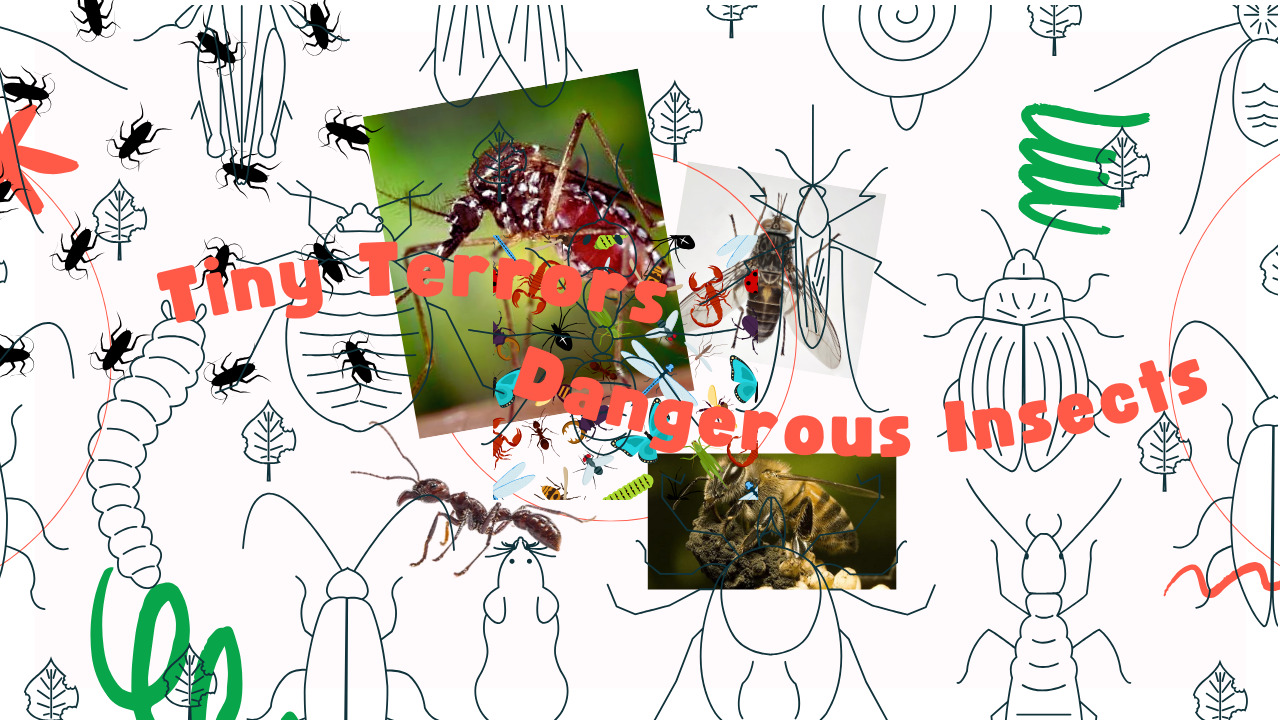Dangerous Insects, despite their small size, have immense power and can cause significant harm to humans and animals. Mosquitoes, the silent killer, transmit deadly diseases like malaria, dengue fever, and Zika virus.
Bullet ants, found in South America, are known for their venomous sting, causing intense pain and muscle spasms. Africanized honey bees, a hybrid of African and European honey bees, are aggressive and can cause allergic reactions and even death.
The tsetse fly, found in sub-Saharan Africa, is a silent carrier of deadly diseases, transmitting trypanosomes and causing sleeping sickness in humans and nagana in livestock. Controlling tsetse fly populations is crucial for preventing outbreaks. Understanding and coexisting with these dangerous insects is essential for our survival.
Understanding the Power of Dangerous InsectsThe Silent Killer – Mosquitoes
Mosquitoes, those tiny buzzing nuisances, are responsible for more deaths than any other insect. Their bites transmit deadly diseases such as malaria, dengue fever, and Zika virus. These bloodsuckers thrive in warm, humid climates, making tropical regions their breeding grounds. To protect ourselves, we must use insect repellents and eliminate stagnant water where they lay their eggs.
The Venomous Assassin – Bullet Ant
The bullet ant, found in South America, packs a punch with its excruciating sting. Its venom is likened to being shot by a bullet, hence the name. Victims experience intense pain, muscle spasms, and even temporary paralysis. Despite its small size, the bullet ant commands respect from humans and other creatures. Avoid disturbing their nests in the rainforests to prevent an encounter with this lethal insect.
The Silent Invader – Africanized Honey Bee
Africanized honey bees, also known as killer bees, are a hybrid of African and European honey bees. Their aggressive nature and tendency to swarm make them a serious threat. When disturbed, they attack in large numbers, stinging victims relentlessly. Their venom can cause allergic reactions, and in extreme cases, lead to death. These bees have spread across the Americas, posing a danger to humans and animals alike.
The Carrier of Doom – Tsetse Fly
The tsetse fly, found in sub-Saharan Africa, is a silent carrier of deadly diseases. It transmits trypanosomes, causing sleeping sickness in humans and nagana in livestock. Victims suffer from fever, fatigue, and neurological symptoms. Controlling tsetse fly populations is crucial for preventing outbreaks. Researchers are working on innovative methods, including sterile insect techniques, to curb their impact.
Conclusion
Insects, despite their small size, wield immense power. From the buzzing mosquito to the venomous bullet ant, their impact on our lives is undeniable. As we navigate our world, let us respect these dangerous creatures and take necessary precautions. Whether it’s using insect repellents or avoiding their habitats, our survival depends on understanding and coexisting with the most dangerous insects.
